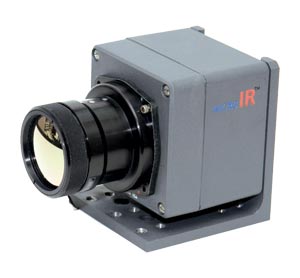Aug 12 2010
Reportlinker has added a new research report about uncooled IR cameras and detectors to its offering.
In the world of night vision, the development of uncooled Infrared detectors has moved forward. Manufacturers of infrared cameras find a wide choice of uncooled infrared detectors available for use in different designs, intended for a variety of commercial, industrial and military products.
 Uncooled IR Cameras & Detectors for Thermography and Vision
Uncooled IR Cameras & Detectors for Thermography and Vision
These products are capable of yielding excellent imaging performance at a lower cost. In detector manufacture, the cost competition is limited due to the availability of few manufacturers, therein lies their attraction. Further cost reduction of -20% can be achieved by Wafer level and Pixel level packaging. It is expected that the sales volume will triple by 2015 from today’s average selling of 200,000 cameras, thereby leading to 23% annual growth rate.
The primary type of uncooled detector is the microbolometer, a device based on microelectromechanical (MEMS) technology. As uncooled technology moved forward, vanadium oxide (VOx) was seen as the detector material of choice. It can be produced, although more expensively than is presently desired. An alternative material, amorphous silicate (aSi) is rapidly popularizing this technology since it can be economically packaged with improved resolution and sensitivity. These detector arrays are available in two formats. Small format with resolution 160x120 and a large format of 640 x 480 array. Between 2010 and 2015, -58% of price reduction is anticipated in small format, and large format is free from reduction in price. Hence, production and packaging costs are maintained, thereby stabilizing the size and cost of uncooled infrared cameras and detectors.
The major player of this sector is FLIR (US) In the next five years they are expected to face huge competition from major camera leaders like Axis, Bosch, Sensonor, and Pelco who are the new comers in IR camera business and also from Sensonar, Faun Infrared who are the new detector suppliers.